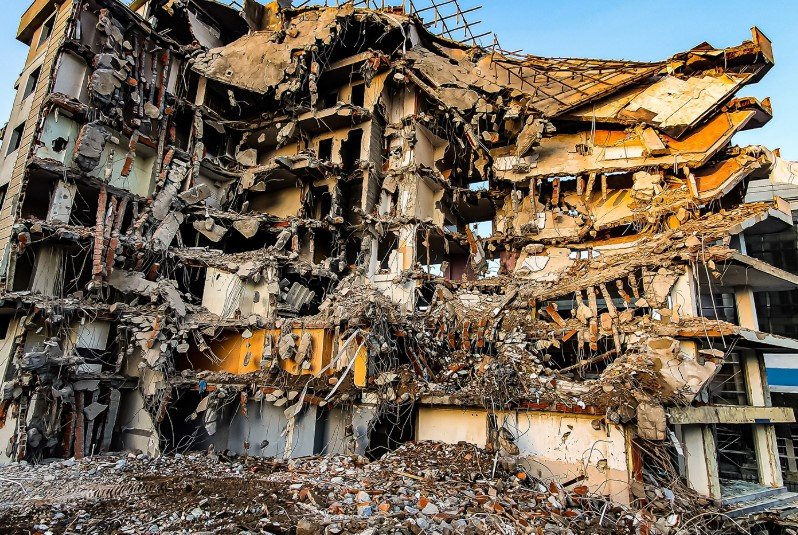More than 55,000 lives were lost in Turkey’s catastrophic 2023 earthquake. Now, Google admits its Android alert system fell short—badly short.
As aftershocks still linger in Turkish minds, a haunting question won’t go away: Could more lives have been saved if Google’s Android Earthquake Alerts (AEA) had worked as intended?
A Missed Alarm at 4:17 AM
The first major tremor hit on February 6, 2023, just before dawn. Most people were asleep. The ground began to tremble—violently—at 4:17 AM.
Google’s AEA system, embedded in millions of Android phones, was active. But it saw a 7.8-magnitude quake as a minor 4.5 to 4.9 event. So, it stayed mostly silent. Only 469 people received the system’s most urgent “Take Action” notification.
Just 469 people.
That number hits differently when you realize nearly 10 million lived within 158 kilometers of the epicenter. That’s the kind of radius where a few seconds of warning might’ve saved lives—tens of thousands of them.
Instead, most Android users received a lesser “Be Aware” alert, which doesn’t override “Do Not Disturb” and is easily missed—especially when you’re asleep.
What Went Wrong, According to Google
For weeks, the tech giant said little. Then came the quiet admission. Google told the BBC that internal diagnostics showed its system had underestimated the quake’s true size. The alert system thought it was a tremor, not a killer.
“We continue to improve the system based on what we learn in each earthquake,” a spokesperson said. That’s about all the company offered.

Google’s AEA system uses the accelerometers in smartphones to detect shaking. Once triggered, it’s supposed to give users up to 60 seconds of warning, enough to drop, cover, and hold on.
But it only works if the tremor is recognized in time—and assessed correctly. Neither happened here.
One sentence, because it hurts to drag this one out.
A Second Quake, Another Confused System
Later the same day, a second powerful quake hit. The system did slightly better this time. But it still wasn’t great.
This time, 8,158 people received the urgent “Take Action” alert. Another four million got “Be Aware” notifications. Still far below what the scale of the tremor warranted.
These alerts were meant to act like digital sirens. But if they arrive too late—or not at all—they’re just missed calls.
A Nation of Android Users Left in the Dark
Turkey is heavily reliant on Android. Over 70% of smartphones there run Google’s operating system. It’s not an exaggeration to say that for many Turkish citizens, Google is their main source of emergency alerts.
That’s why this matters. This wasn’t just a tech glitch. It was a failure on a national scale.
Let’s look at the breakdown:
| Statistic | Data |
|---|---|
| Total deaths (official) | 55,000+ |
| Injured | Over 100,000 |
| Android user penetration in Turkey | 70%+ |
| “Take Action” alerts during first quake | 469 |
| People in affected zone | Nearly 10 million |
The numbers speak for themselves. The contrast between those who should have been alerted and those who were is glaring.
Why the System Misread the Quake
Earthquakes are fast. Like, blink-and-you-miss-it fast. Google’s system relies on a swarm of Android phones to detect vibrations and send data to a central server. But here’s the thing—it doesn’t have any official seismometers.
Instead, it’s crowdsourced.
That works fine for minor tremors. But when the quake is huge, deep, and far-reaching? It’s a different ballgame.
Some seismologists believe the system wasn’t calibrated for such a massive quake. The twin shockwaves likely confused the algorithm. Initial readings misread the depth and force of the tremor.
And remember: even a 10-second delay in understanding an earthquake’s true power can mean entire neighborhoods collapse before people are warned.
Over-Reliance and the Illusion of Safety
There’s a growing concern that governments and citizens are leaning too heavily on corporate tech without public accountability.
Because here’s the problem:
-
AEA isn’t subject to the same standards as government seismic networks.
-
It’s not transparent—there’s no public audit of how it works or fails.
-
And unlike official emergency systems, users can’t opt-in to stricter notifications.
Tech-savvy folks might think: “Oh, my phone’s got this, I’m covered.” But they’re not. Not really.
That false sense of security can be just as dangerous as having no alert system at all.
What Google Isn’t Saying Out Loud
One sentence paragraph again. Because it’s heavy.
Google never clearly said it failed.
Instead, it said the system is “constantly learning.”
That’s fine for software updates or language translation. But when lives are on the line, “learning” isn’t always good enough. People expect accountability, not machine learning jargon.
Governments like Japan and Mexico still depend more on traditional seismometers and broadcast alerts. They’re slower, maybe, but often more accurate. The AEA system has potential—but after Turkey, its limitations are impossible to ignore.
Can the System Be Fixed Before the Next Big One?
That’s the question keeping emergency planners up at night.
Experts argue that Google must:
-
Collaborate with national seismic agencies.
-
Open-source parts of the system so researchers can study failures.
-
Offer clearer distinctions between minor and major alerts.
Will it happen? Hard to say.
Google’s business is user trust, and moments like these chip away at it.
